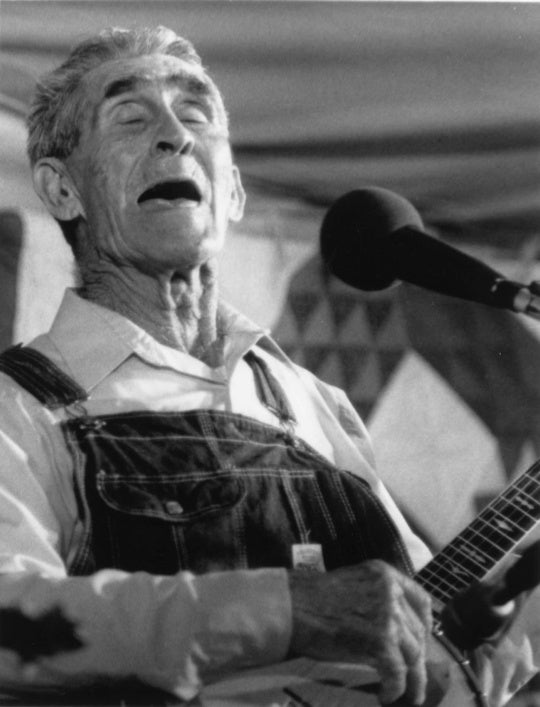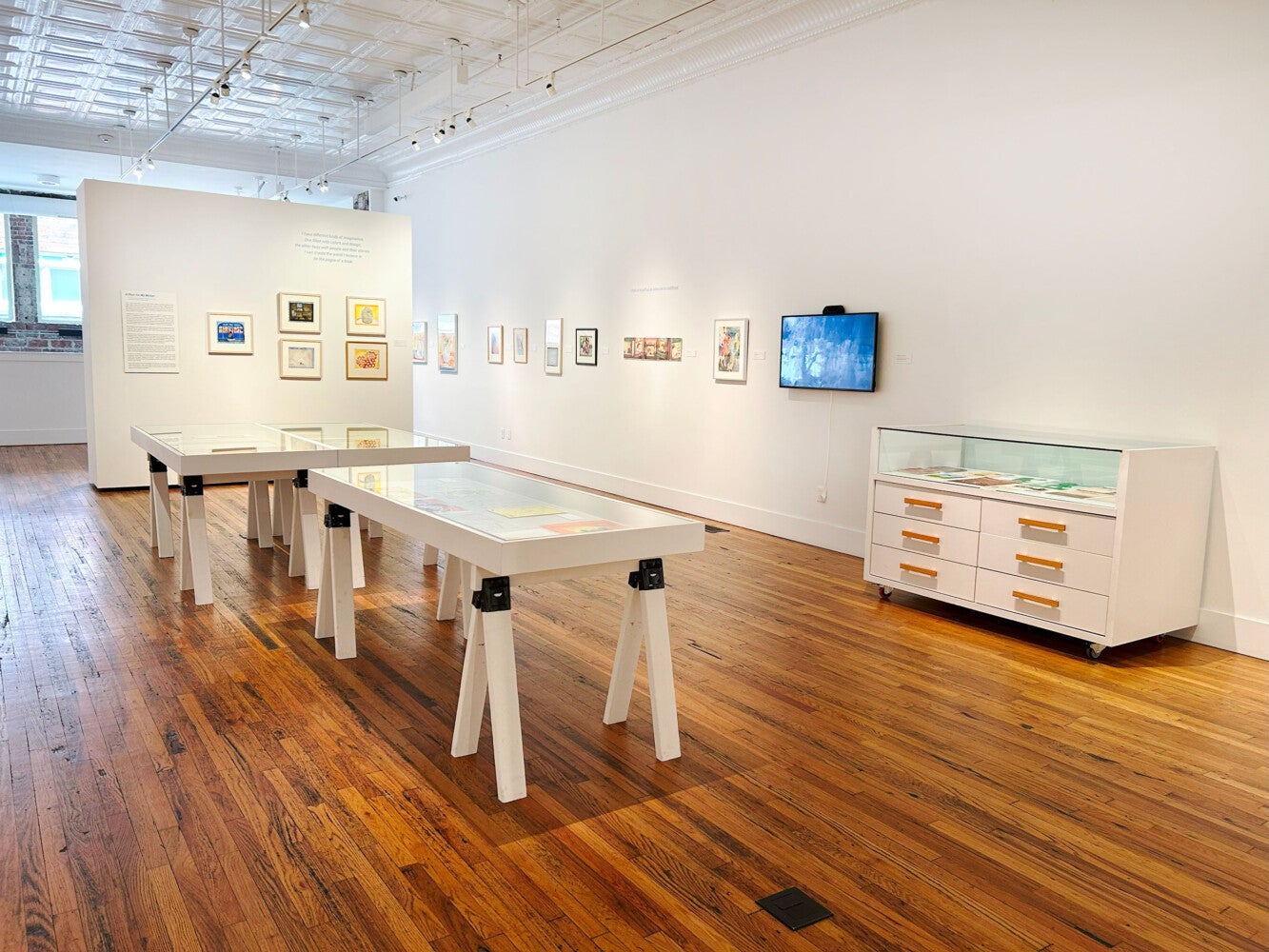
The making and re-making of the Black Mountain College canon remains an exciting but undervalued endeavor for the legacy of an institution hailed as a crucible of American modernism. The story of Black Mountain College is traditionally told through the patrimony of modernist blue chip gallery thirst traps and a coterie of usual suspects, but Vera B. Williams / STORIES: Eight Decades of Politics and Picture Making paints a fuller picture by highlighting an outlier.
Vera B. Williams was born in the Bronx, New York, to a working-class Jewish immigrant family and raised during the Depression, imprinted with an adamant leftist perspective that sustained her projects and perspective. Coming to Black Mountain College in 1945, the institution became a hugely important part of her life as a student and for years after. Williams (neé Baker) literally helped build additional school buildings as a bricklayer, a fact highlighted in a newspaper article on display in the exhibition. “At Black Mountain College the students do whatever needs to be done,” she’s quoted as saying. “We needed a music practice room so we built a house.” Her eventual husband, architect Paul Williams, designed multiple campus buildings, and the two later married on the school’s idyllic Blue Ridge campus. She graduated from the college in 1948–one of the few to actually complete her degree from the experimental school.
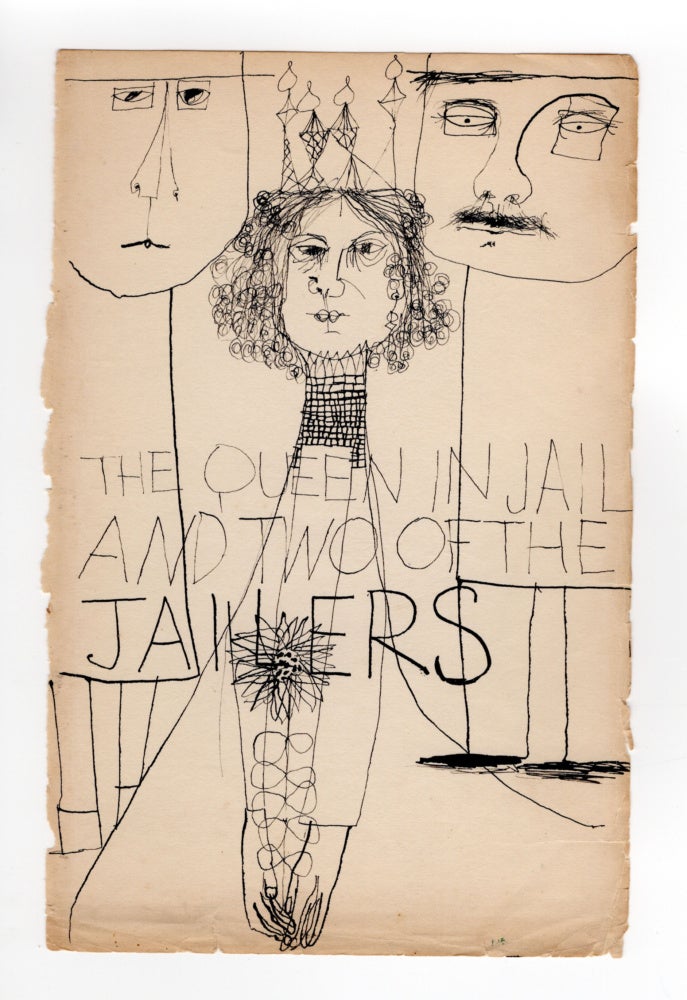
Black Mountain’s highest aim for its students, many of whom were artists, was radical engagement in democracy–and Williams truly lived up to the school’s ideals. Her earlier drawing style carries a beatnik and early counter-cultural kinship: mixing scrawling, spidery, and delicate line work with a decisively anti-authorian bent. In dazzling and deranged contour drawings dating back to the early 1950s, Williams depicts police officers violating flower gardens and disrespecting their own governing authorities, playfully symbolized by royal kings and queens. The school’s ethos also led Williams and her husband to establish Gate Hill Cooperative in 1954. Located in Rockland County, NY, “The Land,” as it’s also known, started as a subsequent alternative community inspired by Black Mountain and featured many of the same notable figures; it remains open in altered form today.
The exhibition highlights Williams’ art and activism by spotlighting her illustrations for over seventy covers of Liberation magazine, a New Left pacifist magazine co-founded by Bayard Rustin, who visited Black Mountain College in 1947. Of the many accolades for Liberation’s twenty-one-year run, it is credited with the first publication of Martin Luther King Jr.’s famed Letter from Birmingham Jail, for which Williams illustrated the cover.
Her art and activism continued to gain momentum, illustrating posters for anti-nuclear proliferations and participating in direct actions throughout the 1980s. After a 1981 women’s blockade of the Pentagon, the artist was incarcerated for a month at West Virginia’s Alderson Federal Penitentiary.
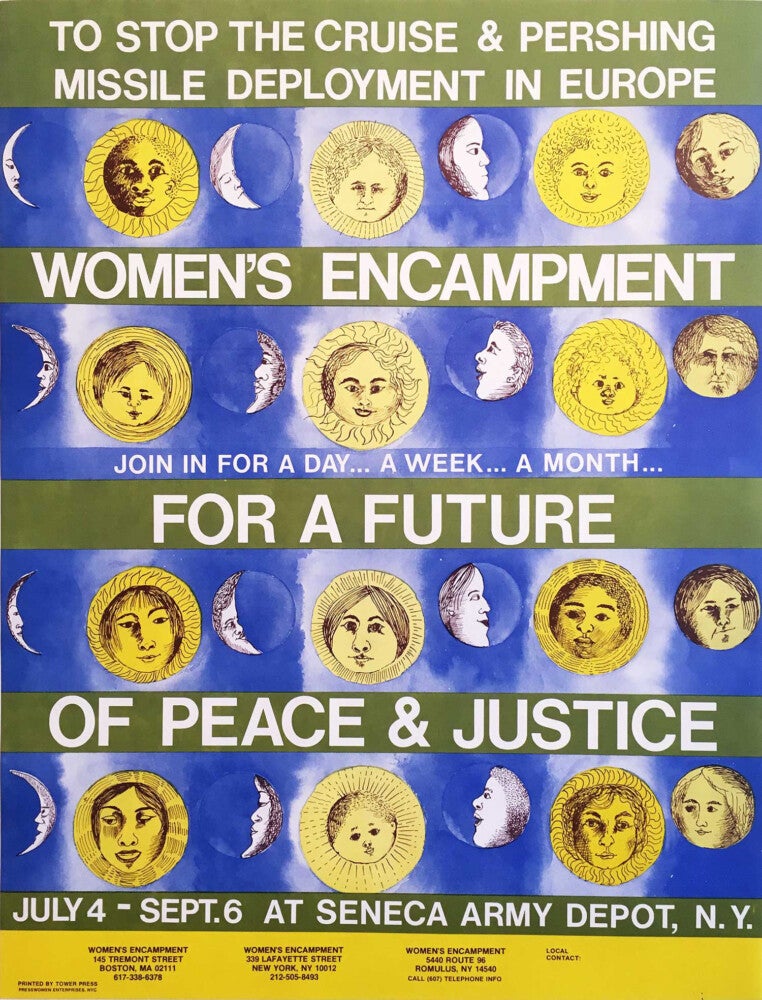
Williams mentioned how the style and method of creating her early political drawings “fit well with motherhood duties, always interrupted by the kids.” Children would go on to provide a wellspring of inspiration through most of Williams’ professional endeavors. Beginning in the 1970s, she found a self-sustaining art career in writing and illustrating children’s books, less tethered to the explosive and volatile contemporary art market and more attuned to a collective hunger for stories of those historically overlooked in the United States.
Her award-winning work as a children’s author and illustrator forms a vast and central part of the exhibition, laying bare the labor of her magic with ephemera and process pieces. It is not hard to see how Williams has been eclipsed by Black Mountain College’s vanguard despite remaining closely networked with them for the remainder of her life. Unlike the college’s luminaries, her radical impulses and output remained hidden in plain sight, buried in picture books focused on working-class realities.
Small curatorial surprises pepper the show, too, like drawings for a 1962 production of Bertolt Brecht’s Man is Man in the museum’s interactive archival display drawers. During her end-of-life battles with heart complications and cancer, Williams bravely faced and processed her own mortality with drawings and other works on paper that are more humorous and contemplative. The subsequent body of work reverently punctuates the exhibition space.
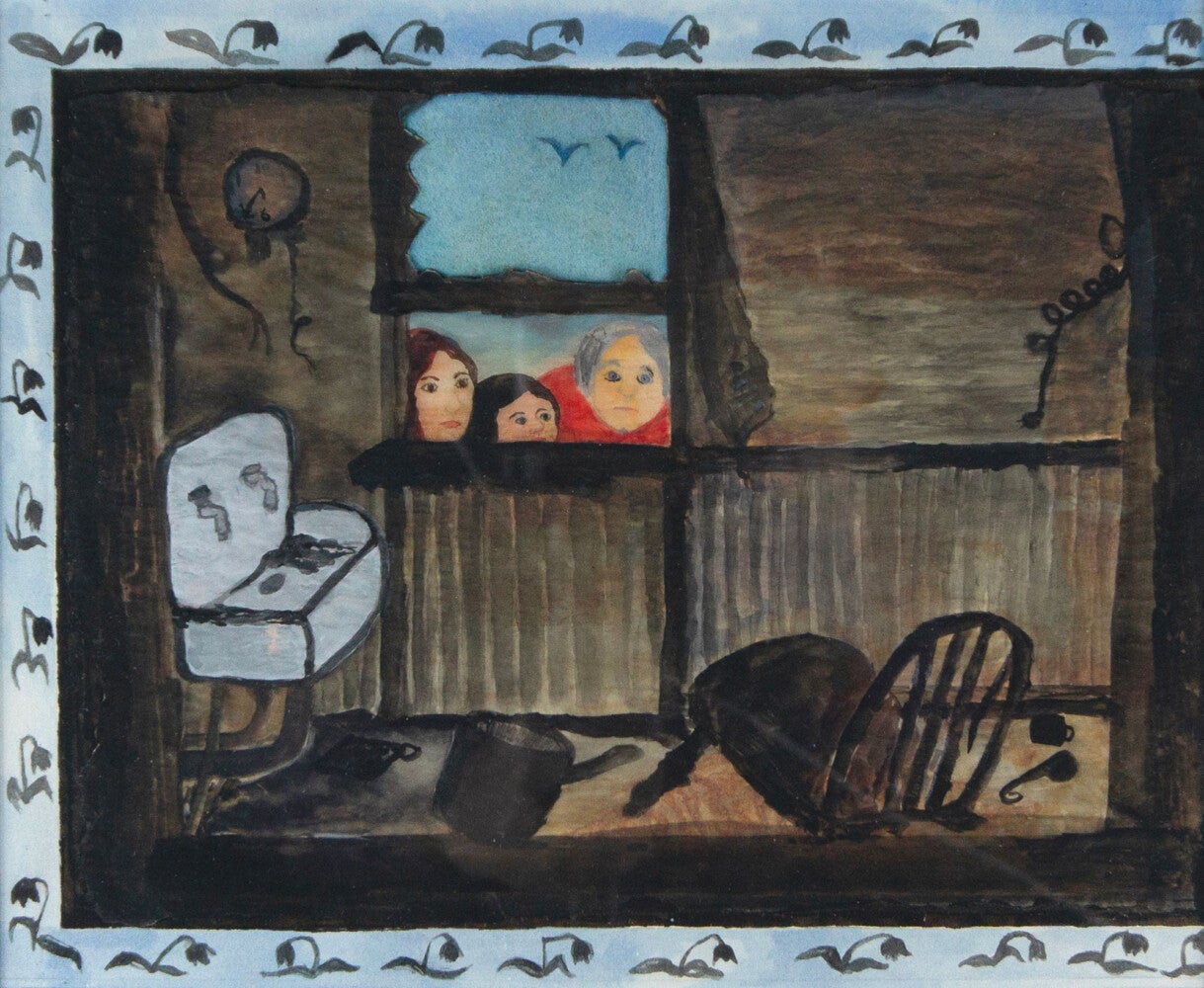
The exhibition left me with a deep curiosity about how Williams’ work has been historically curated and how those in the present may reconsider her legacy in the ongoing re-telling of feminist art and related movements. She remained clear-eyed about her life’s work and its transmission, focusing on figure drawing and autobiographical cartoons while keeping her hands in a dizzying number of activist networks.
The exhibition does not claim any singular auteur curation, instead created through a collective effort of the museum’s Director of Preservation, Alice Sebrell, with Williams’ children, Sara, Jennifer, and Merce Williams, and a host of community and institutional members. This approach arguably echoes Williams’ lifelong belief in collective action and organization.
It is refreshing to see the small but mighty BMC Museum + Arts Center continue to dig through its archives, activate its community resources, and produce a show like this one. While grafting an artist’s biography onto their art is often a precarious tightrope, the exhibition’s curation lovingly folds together both the life and work of Vera B. Williams.
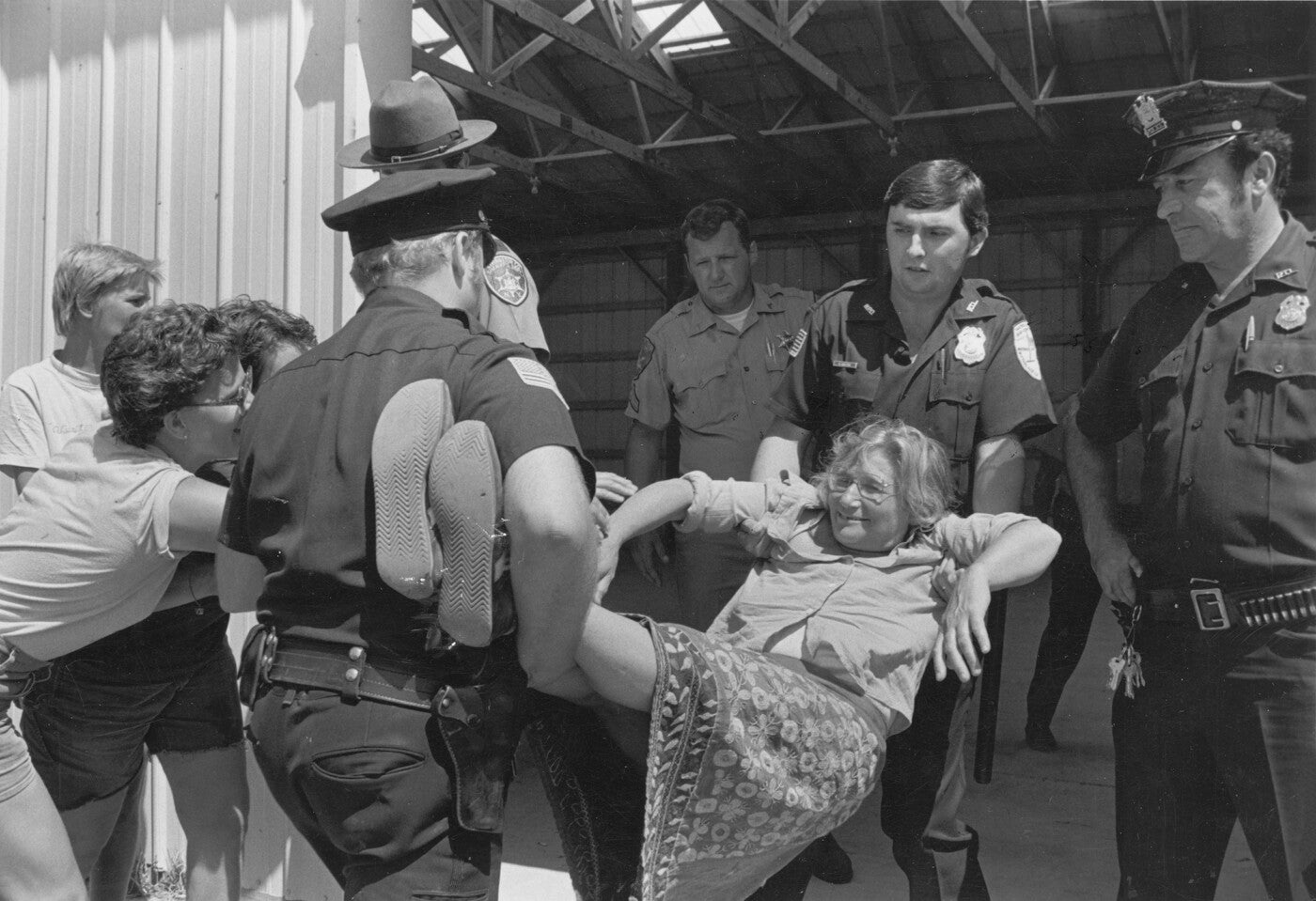
Vera B. Williams / STORIES: Eight Decades of Politics and Picture Making is on view at the Black Mountain College Museum + Arts Center in Asheville, NC, through May 11, 2024.

